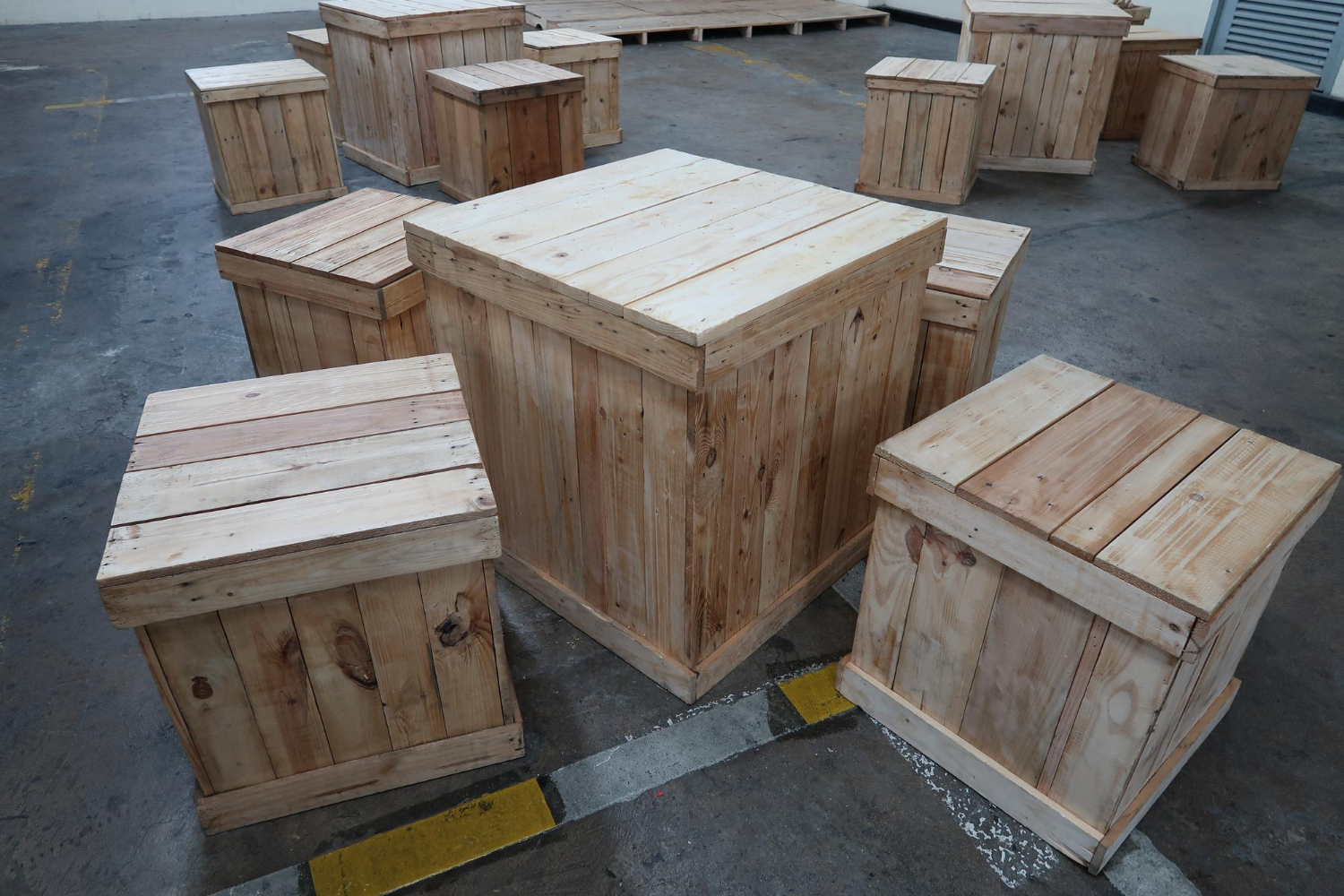Shipping equipment overseas isn’t just a matter of loading it into the nearest box and calling it a day. If the crate is too small, the item might get damaged. If it’s too big, you’re paying for a lot of empty space. Whether you’re shipping a machine part, an engine, or sensitive instruments, choosing the right crate container can make the process smoother, faster, and safer.
With overseas transit, bumps, heavy handling, and environmental changes are all part of the ride. So the crate needs to do more than just hold something. It needs to hold it well. That means the size has to be right, and the crate itself needs to be designed to protect against whatever conditions come between point A and point B.
Orcon Industries has years of hands-on experience solving this exact problem for companies across industries. With custom packaging solutions designed to match the shape, size, and sensitivity of your equipment, we make sure your gear arrives the way it left.
Assessing Your Equipment’s Size and Weight
Before picking a crate of any kind, start with the basics: length, width, height, and weight of the item you’re shipping. These numbers are the starting point for everything else. If you use the wrong measurements, you may end up with a crate that doesn’t fit or fails to support the load during lifting or stacking.
Too tight, and the equipment may press against the walls with no room for padding. Too loose, and it could shift on impact. Both situations can lead to damage. That’s why accurate measurements aren’t just helpful—they’re a must.
You’ll also want to factor in:
1. Any extra space needed for bracing, foam inserts, or padding
2. Whether the item has fragile edges, rods, or exposed points
3. Shape issues that make rectangular crates less efficient
4. The weight distribution within the crate (important for balance during transport)
For example, if you’re shipping a piece of lab equipment that’s dense on one side and hollow on the other, you wouldn’t want it tipping over during transport. The internal layout will affect how the crate should be reinforced and balanced.
If you’re sending multiple smaller pieces in one crate, measure how they sit together inside the container. Grouping items without planning can lead to unnecessary pressure points or gaps that shift during transit. Working with a packaging partner early on can help with layout planning and avoid those headaches before they start.
Understanding International Shipping Regulations
Before sending a crate across oceans, it helps to be aware that different countries follow their own sets of rules. These can cover the crate’s materials, how the equipment is packed, and even labeling. A lot of places require that wood crates follow heat treatment or fumigation standards to avoid transferring bugs or contaminants from one region to another. If that rule’s missed, the crate might be held or rejected when it lands.
Documentation is another piece that can’t be skipped. Most countries ask for packing lists, invoices, and shipping declarations that give exact details about what’s in the crate container. Skipping one document, or even listing an item incorrectly, can lead to customs delays or added fees. It’s best to get familiar with the rules tied to the destination country long before loading day.
Also, different carriers may have their own restrictions on size and weight. Just because a crate makes sense for your equipment doesn’t mean it fits the transportation limits. Be sure spacing around the equipment also follows regulations. Some international routes require buffers inside crates to allow airflow or to qualify for insurance coverage.
If your equipment includes electronics or sensitive parts, those might be subject to shipping rules beyond basic crate design. Whether it’s due to battery placement or magnetic fields, some cargo needs special notices to clear customs without delays. Planning up front avoids a lot of friction later.
Types of Crate Containers for Different Equipment
Choosing a proper crate doesn’t just come down to how big or strong it is. The type of crate matters just as much. Different materials bring their own benefits, and some are better-suited depending on what you’re packing and where it’s going.
Here’s a breakdown of common crate container options:
1. Wooden crates: These are still the most widely used for overseas shipping. They’re strong, stack easily, and work well for heavy or bulky items. But they need to meet international wood treatment standards.
2. Plywood crates: Lighter than solid wood but still sturdy. These are a good option for items that aren’t extremely heavy but still need protective structure.
3. Plastic crates: These resist moisture and can be a reliable choice for sensitive or corrosion-prone goods. Reusable models are popular in this category, especially when there’s back-and-forth shipping with known partners.
4. Hybrid crates: These use a mix of materials like wood frames and foam-lined interiors, ideal for supporting sensitive machines or instruments during impact.
The equipment itself will help decide which one makes sense. For example, if you’re shipping a set of spare auto parts with irregular shapes, a solid wooden crate offers the support and can be tailored to handle odd-size items. But a container of lightweight photo gear might travel better in a high-impact plastic crate with foam inserts for shock absorption.
Think about whether the crate will be reused. A one-time shipment might only need standard materials, but repeat shipments or high-value items may justify something more durable.
Customization and Protection Features
One-size-fits-all doesn’t work when you’re sending delicate, shaped, or mission-specific equipment across an ocean. That’s where custom crates make a difference. Size is just one part of the choice. The way your equipment is held in place matters just as much.
Padding, blocking, anchoring, and insulation systems all come into play to create a layer of protection that helps manage bouncing, shifting, and moisture buildup. These elements work together to hold the item in place and absorb unexpected movement or vibration.
Customization might include:
1. Foam cut precisely to fit the shape of your item
2. Shock mounts or stabilizers for vibration-sensitive equipment
3. Compartments sized right for parts or cables
4. Tie-down brackets for rolling items like carts or wheeled machines
Say you’re sending a precision-calibrated unit. A small shift might throw it off and require a costly recalibration. A crate with dense foam pockets could lock your gear in tighter than straps alone and stop movement altogether. Add in a barrier to absorb moisture, and the package still performs like new when it arrives.
These added protection features can be the difference between needing repairs and being ready to use straight out of the box.
Making Sure Transport Goes As Smooth As Possible
Once the crate is packed and sealed, there’s still one more important part—how it travels. Even a well-built crate can fail if the equipment inside isn’t placed properly or the wrong freight method is used.
Here are a few ways to help reduce problems:
1. Put heavier loads near the base and support them with internal blocking
2. Consider adding moisture control materials when headed through humid or marine zones
3. Don’t over-pack the crate, as shifting pressure during loading can damage surfaces
4. Use clear exterior labels to note direction, load capacity, and handling information
5. Pick a freight option that matches the equipment’s size, value, and delivery needs
If your crate will be stacked or left out in docks, make sure it holds up against elements like rain, saltwater, and direct sunlight. Ventilation, sealing, and surface treatments all play a part in weather protection.
Safe shipping doesn’t stop when the lid closes. Plan for everything from side bumps to vertical drops. A crate container should be capable of protecting every direction, every time.
Know What You’re Shipping, Then Ship It Smart
Shipping overseas doesn’t have to be complicated. It just takes planning. Getting the right measurements, picking the right materials, and knowing the rules each country follows can go a long way in preventing delays or damage.
All crate containers are not built the same. A wrong fit or the wrong material can lead to repairs, extra costs, or failed deliveries. Pick what works for the equipment, then support that with the right interior design like cut foam or shock-absorbing materials.
You don’t have to figure it out alone either. Designing packaging around your equipment is what we do best. Whether you’re shipping a small batch of components or a large machine, we’ll make sure it’s packed safely, securely, and right the first time.
If you’re looking for a reliable way to protect your equipment during overseas transport, Orcon Industries can help you get started with a crate container that’s built to match your shipping needs. Our custom solutions are designed to keep your cargo secure while meeting international standards every step of the way. Learn more about how we can support your next shipment with a crate container.




